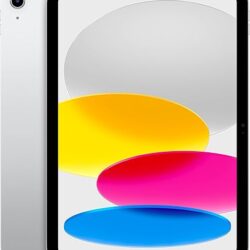四、使用数词时需要注意的一些问题 Points that merit special attention
(一)称数法 Enumeration
1.一百以下的数目,汉语里用“十进位法”表示。 In Chinese, the decimal system is used for counting numbers below one hundred.
(1) 1~10 是:
One to ten:
一(1)
二(2)
三(3)
四(4)
五(5)
六(6)
七(7)
八(8)
九(9)
十(10)
(2) 11~19 是:“十”加后面的个位数字。即:
The numbers from eleven to nineteen are formed by adding before the units. Here are they:
十一(11)
十二(12)
十三(13)
十四(14)
十五(15)
十六(16)
十七(17)
十八(18)
十九(19)
(3)“20~90” 中个位数是“0”的,一律按“十位数的数字”加“十”的格式来表示。例如:
The tens are formed by adding + after the digit of the tenth’s place. For example;
20 是 二十
30 是 三十
90 是 九十
70 是 七十
(4)其他数目用“十位数的数字”加“十”加“个位数的数字”的格式来表示。例如:
Numerals between the tens are formed by the formula “ the tenth’s place + the unit”. For example:
21 是 二十一
32 是 三十二
67 是六十七
54 是 五十四
98 是 九十八
2.一百以上的数目,汉语里用下面九个“位”来表示。即按下面“位”的顺序说出每一个数字来。例如:
There may be nine digit places in all in a big number and one reads it in this order:
1 3 4 7 6 5 8 2 9
应说成:一亿三千四百七十六万五千八百二十九。
It should be read:一亿三千四百七十六万五千八百二十九
九个“位”中以“亿、万、个”为基本单位。例如:
Of the nine digit places, Z, and are the basic ones. For example:
1500:一千五(百) x十五百
15 000:一万五(千) x十五千
3.用多位数字表示年代、船只、车辆、房间、电话等号码时,常直接读出数字,不说“位”。例如:
Serial numbers, such as the name of a year or the number of a ship, vehicle, room or telephone are read out figure by figure. For example:
我的电话是68667531。
这辆汽车的牌照是:京 G92831。
 亚马逊导购
亚马逊导购  读新闻学外语
读新闻学外语  卑诗省当天新盘
卑诗省当天新盘
(二)“0”的表示法
The way to read “0” (zero)
1.单独的“0”读作“零”。例如:
“0” as a unit is read líng. For example:
二减二等于零。
2.多位数中的“十”位数是“0”时,一定要读出“零”来。例如:
When “0”occupies the place of 十, we must also read it líng. For example:
308 是三百零八。
509是五百零九。
如果“0”在“千”位“万”位上,可以不说出“零”。例如:
When “0” occupies the place of F or H, it is not necessary to read it out. For example:
40 602 是四万(零)六百零二。
- 多位数中有两个或两个以上的“0”连在一起时,只读一次零。例如:
When there are two or more zero places in succession in a big number, one reads out líng only once. For example:
90 086 是 九万零八十六。
90 086 is read 九万零八十六.
900 086 是 九十万零八十六。
900 086 is read 九十万零八十六,
9000 086 是九百万零八十六。
9000 086 is read 九百万零八十六,
4.“0”在多位数的末尾时,不管是一个还是几个连用,一律不读“零”。例如:
The zero place(s) at the end of a big number is (are) not read out. For example:
120 是 一百二(十)。
120 is read 一百二(十).
12 000 是一万二(千)。
12 000 is read 一万二(千).
如果这样的多位数后边有量词,就要把“0”前边的“位”读出来。例如:
If the big number is followed by a measure word, the place just before the zero place should be read out. For example:
120 张电影票,要说成:一百二十张电影票。
120 张电影票 should be read -百二十张电影票.
12 000 个观众,要说成:一万两千个观众。
12 000 个观众should be read -万两千个观众,
5.车辆、船只、电话等号码需要直接读出数字时,每个“0”
都要读出来。例如:
Every “0” should be read out when one gives a serial number. For example:
车号是900501。
应该读成:车号是九零零五零一。
This should be read:车号是九零零五零一.
(三)“1”在多位数中的表示法
The way to read “1” in a big number
“1”在“十”位数上,也应当读“一十”。例如:
When “1” occurs at the place of +, one reads it as -+. For example:
215 是 二百一十五,不说“二百十五”。
215 is read 二百一十五,not“二百十五”,
3418 是 三千四百一十八,不说“三千四百十八”。
3418 is read 三千四百一十八,not“三千四百十八”。
61 119 是 六万一千一百一十九。
61 119 is read六万一千一百一十九,
(四)“2”的表示法
The way to read “2”
- 汉语里,“2”可以用”二”或“两”来表示。“二”可以单说,“两”不能单独使用。例如:
Although the number “2” can be represented by = or in Chinese, the two are different in that can be used in isolation, whereas can not. For example:
一、二、三 x一、两、三
这是二。 x这是两。 - 直接读出数字时读“二”。例如:
In a serial number, “2” is read . For example:
324–三二四
5 230–一五二三零 - 在多位数中的“十”位数和“个”位数上,一定要读“二”。例如:
When it occupies the place + or ↑, “2″ is read . For example:
28 是 二十八
28 is read 二十八,
752 是 七百五十二
752 is read 七百五十二,
8 722 是 八千七百二十二
8722 is read 八千七百二十二, - 表示序数的“2”读“二”。例如:
In ordinal numbers, “2” is read . For example:
第二
第二排
二姐
二层
5.在分数中,读“二”。例如:
In fractions, “2” is read . For example:
2/5是 五分之二
2/5 is read 五分之二.
1/2是 二分之一
1/2 is read 二分之一,
6.在量词前边一般要说“两”。例如:
“2” is read 两, when followed by a measure word. For example:
两只兔子 x二只兔子
两块手表 x二块手表
两张报 x二张报
两个面包 x二个面包
但在一些市制度量衡单位量词前边的“2”可以说成“二”或“两”。例如:
But when it precedes a measure word of length, capacity or weight, “2” can either be read 二 or两 . For example:
2尺布:
两尺布,
二尺布
2斤苹果:
两斤苹果,
二斤苹果
(五)数词做定语和结构助词“的(de)”
Numerals used as attributives and the structural particle j (de)
- 数词常直接用在量词前做定语。例如:
Numerals are often used as attributives immediately before a measure
word. For example:
我是一个学生。x我是一学生。
那是一张世界地图。x那是一世界地图。
我买三套纪念邮票。x我买三纪念邮票。
她有两支红圆珠笔。x她有两红圆珠笔。
- 数词在其他数目前做定语时,要用助词“的”。例如:
When a numeral is used as an attributive modifying another numeral, the particle J should be used. For example:
三的五倍是十五。
五是二十五的五分之一。
一百的四分之三等于七十五。
(六)数词直接用在名词前表示序数时,多属下列情況:
Under the following conditions, the numeral followed immediately by a noun is an ordinal number: - 表示亲属称呼的。例如:
Used in a vocative for a family member. For example:
二叔
三姐
四弟
2.表示年、月、日的。例如:
Used in the names of the year, month or date. For example:
一九九○年
二000年
二0一0年
二月
六月
十二月
十一号
二十号
二十八号 - 表示事物等级和类别的。例如:
Used to show grades and catagories. For example:
一级
二层
一年级
三班
(七)表示概数时一定要连用两个相邻的数词,而且要按次序先说小的数字,不能随意连用。例如:
The small one of the two adjacent numbers in an approximate number is always followed by the bigger one. For example:
三四十
十七八
但有个别的例外,有时说“三五个”或“”。
But there are a few exceptions, like 三五个, 三两次, etc.
(八)“半”的用法
The use of 半
“半”是一个特殊的数词,它的数量等于二分之一,但用法和一般数词不完全相同。
4, meaning “ half”, is a special numeral which is not always used in the same way as an ordinary numeral.
- “半”不能单独充当句子成分。
It can not be used in isolation.
2.“半”常用在量词前边。例如:
It is often put before a measure word. For example:
半碗(饭)
半张(纸)
半瓶(牛奶)
3.“半”常用在整数和量词后边。例如:
It often follows a whole number + measure word” sequence. For example:
一天半
三张半
五公斤半
4.“半”前边加上数词“一”或“两”,构成“一半”或“两半”,相当于名词的作用,可以充当句子成分。注意只能加一”或“两”。例如:
Numeral 一or 两 can be added before , for example: 一半 or 两半, which are used as nouns and can act as a sentence element. Attention; only 一 and 两can be put before 半. For example:
我只要一半,那一半给你。
x我只要两(三、四……)半,那三半给你。
这一半是我的,那一半是你的。
x这四半是我的,那五半是你的。
这个苹果分成两半吧,你一半,我一半。
x分成二半
(九)倍数是用来表示增加的,如果表示数量减少,就要用分数。例如:
Multiple numbers are used to show increases. When we wish to express a decrease, we use fractions. For example:
工作效率提高了两倍,时间却缩短了二分之一。
One can never say 时间缩短了一倍。
这个工厂今年的产量比去年减少了百分之二十。
There is no such form as -减少了百分之二百(or 两倍).
(十)提问数目时,常用“几”和“十、百、千、万”等连用的方法。例如:
几 is often combined with 十,百,千,万, etc. to ask about amount or quantity. For example:
今年你弟弟十几(岁)?
门前停着几十辆汽车?
那个礼堂能坐几百人?
你们林场种了几千棵树?
这本书有几万字?
也常用“多少”提问。例如:
E is also often used in questions like:
这是多少?
你这个月工作了多少天?
(十一)表示分数时,必须先说分母,后说分子,绝不能颠倒。
例如一只能说“二分之一”,不能说成“一分之二”。
In reading a fraction, the denominator always precedes the numerator, as 1/2 is read 二分之一, not 一分之二。








